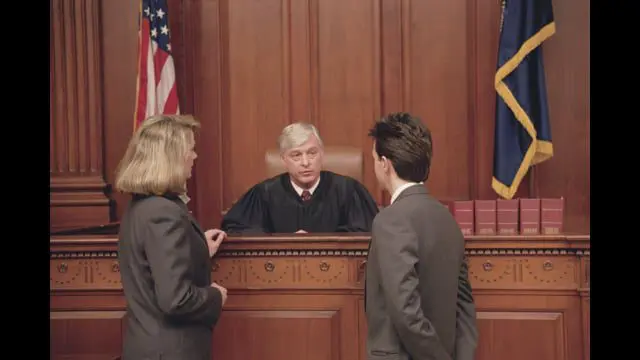Case law, also known as precedent, is a fundamental principle of the legal system in many countries, particularly those following the common law tradition. It refers to the collection of past judicial decisions that have been made by courts when interpreting legislation, constitutions, or other case law. These decisions are used as a guide for future cases, ensuring consistency, predictability, and fairness in the law.
The Role of Case Law in the Legal System
The legal framework is built upon statutes and legislation passed by lawmakers. However, statutes can be broad, leaving room for interpretation. This is where case law comes into play, filling the gaps and clarifying the application of law in specific instances. When a court faces a case with no exact statutory guidance, it looks to relevant precedents to find a solution. This process underscores the dynamic nature of law, allowing it to evolve with society’s changing values and norms.
How Case Law Works
The doctrine of stare decisis, Latin for “to stand by things decided,” is the cornerstone of case law. It obliges courts to follow the precedents set by higher courts in the same jurisdiction. This hierarchical system ensures that lower courts adhere to the legal principles established by appellate or supreme courts, thereby maintaining a coherent legal system. However, a court may distinguish a precedent if the facts of the current case are significantly different, allowing for legal principles to adapt over time.
Sources and Searches for Case Law
In today’s digital age, accessing case law has never been easier. Platforms such as Google Scholar, Justia, and the Legal Information Institute offer comprehensive databases of federal and state case law. These resources allow legal professionals, students, and the general public to conduct detailed research on judicial decisions, understand legal trends, and grasp the nuances of the law across different jurisdictions.
Case Law in Action: Real-Life Applications
Case law’s impact is evident in various areas of law, from civil rights to contract disputes, and intellectual property to family law. For instance, landmark decisions such as Brown v. Board of Education have shaped civil rights law, while Roe v. Wade has influenced reproductive rights. These cases illustrate how judicial rulings can have far-reaching implications, affecting not just the parties involved but society at large.
Challenges and Criticisms of Relying on Case Law
While case law is indispensable for the legal system, it is not without its challenges. Critics argue that overreliance on precedent can hinder legal innovation and adaptability. Moreover, the vast amount of case law can make legal research cumbersome, and the interpretation of precedents can vary, leading to inconsistencies. Despite these concerns, case law remains a vital component of legal practice, offering a rich history of legal reasoning and a framework for resolving new legal dilemmas.
Conclusión
Case law is a pivotal element of the legal landscape, providing a bridge between written laws and their application in real life. It ensures that the law is not static but evolves through judicial interpretation, reflecting society’s changing values and needs. As such, understanding case law is crucial for anyone involved in the legal profession, as well as for individuals seeking to understand their rights and obligations under the law.
Fuentes:
- Justia: https://law.justia.com/
- Legal Information Institute (LII) at Cornell Law School: https://www.law.cornell.edu/wex/case_law
- Diccionario jurídico: https://legaldictionary.net/case-law/
This summary encapsulates the essence of case law, its significance in the legal system, and how it influences the interpretation and application of laws across various jurisdictions.
Expanding on the concept of case law within the United States legal system, landmark Supreme Court cases have not only shaped American jurisprudence but have also had profound impacts on societal norms and the legal landscape. These cases illustrate the dynamic nature of law and its ability to adapt to societal changes, reflecting evolving values and principles over time.
One of the earliest pivotal cases, Marbury v. Madison (1803), established the principle of judicial review, allowing the Supreme Court the authority to strike down laws deemed unconstitutional. This case set the foundation for the judiciary’s role as a co-equal branch of government, capable of checking the powers of the legislature and the executive.
En McCulloch v. Maryland (1819), the Court affirmed the federal government’s supremacy over the states and recognized implied powers within the Constitution, thereby allowing the establishment of a national bank. This decision reinforced the flexibility of the Constitution through the Necessary and Proper Clause, supporting a broad interpretation of federal powers.
Gibbons v. Ogden (1824) further expanded federal authority by defining Congress’s power to regulate interstate commerce in broad terms. This case underscored the federal government’s ability to regulate a wide array of economic activities, marking a significant expansion of federal power over the economy.
The infamous Dred Scott v. Sandford (1857) case highlighted the Supreme Court’s role in the contentious issue of slavery, ruling that African Americans could not be American citizens and that Congress had no authority to prohibit slavery in the territories. This decision intensified national divisions over slavery and contributed to the onset of the Civil War.
Brown v. Board of Education (1954) marked a watershed moment in the fight for civil rights, as the Court unanimously ruled that racial segregation in public schools was unconstitutional, overturning the “separate but equal” doctrine established in Plessy v. Ferguson. This case was pivotal in the Civil Rights Movement, leading to the desegregation of public institutions across America.
Miranda v. Arizona (1966) transformed law enforcement practices by establishing the requirement for police to inform suspects of their rights to silence and legal counsel during interrogations. The “Miranda rights” have become a fundamental aspect of criminal procedure in the United States, safeguarding individuals’ Fifth Amendment rights against self-incrimination.
Roe v. Wade (1973) significantly impacted reproductive rights by ruling that the Constitution protects a woman’s right to choose an abortion without excessive government restriction. This landmark decision sparked ongoing debates and legal battles over abortion rights, illustrating the Supreme Court’s influential role in addressing contentious social issues.
These landmark cases, among others, demonstrate the Supreme Court’s critical role in interpreting the Constitution and shaping American society. They highlight the evolving nature of case law and its impact on both the legal system and societal norms. By examining these cases, we gain insight into the principles of justice, equality, and liberty that underpin the American legal system and the continuous dialogue between law and society.
For a more detailed exploration of these landmark cases and their impacts, sources like the American Bar Association and the National Law Review provide comprehensive overviews and analyses.
Divulgación: Generative AI creó el artículo









